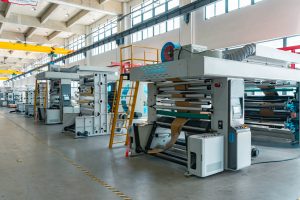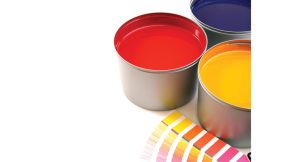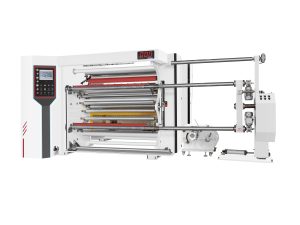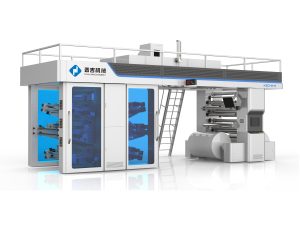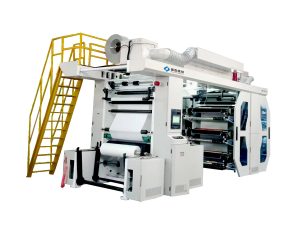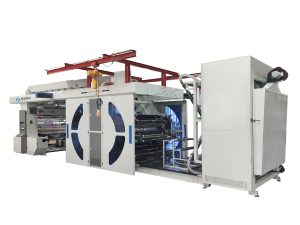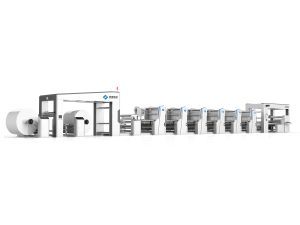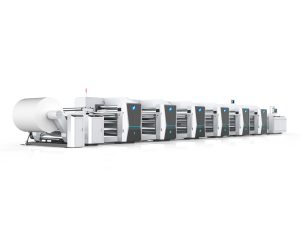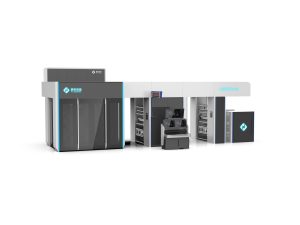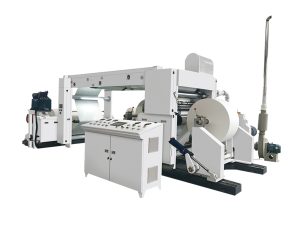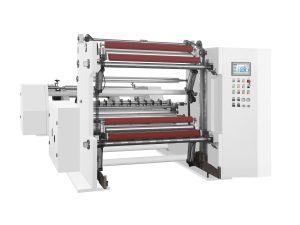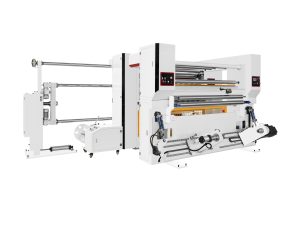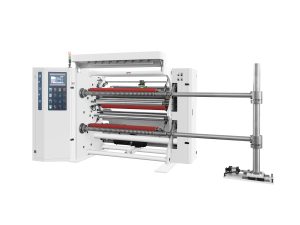Upgrading your packaging production line is more than just buying new equipment—it’s about choosing the right flexo printing solution that will determine your product quality, efficiency, and profitability for years to come. The decision between a stack flexo printing machine and an inline flexo printing machine is crucial. Each has unique strengths and limitations, and knowing the 5 key differences will help you make the right choice for your production goals.
Table of Contents
Toggle1. Machine Configuration: Vertical Stack vs Horizontal Inline
The foundation of any printing machine is its layout. The way stations are arranged directly impacts your workflow, floor space, and long-term scalability.
-
Stack Printing:
A stack type flexo printing machine arranges its printing stations vertically, one on top of another. This tower-like structure saves valuable floor space and makes each unit independently accessible. If you want a compact machine that fits into an existing plant layout without major restructuring, stack printing offers an attractive solution. -
Inline Printing:
An inline flexo printing machine places each station horizontally, aligned in a straight line. This design ensures a smooth material flow from one station to the next. Inline machines also make it easier to integrate additional modules such as laminators, die-cutters, or digital inline printing systems, giving you a flexible production ecosystem.
Table 1: Layout Comparison
| Feature | Stack Printing | Inline Printing |
|---|---|---|
| Station Arrangement | Vertical (stacked) | Horizontal (inline) |
| Floor Space | Compact | Requires more |
| Expansion Possibility | Limited | High (modular integration) |
| Accessibility | Each unit is easy to maintain | Linear access, streamlined for automation |
📌 If your priority is space-saving and individual unit accessibility, stack type flexo printing machines give you an edge. But if you want scalability and seamless material flow, inline flexo printing machines deliver unmatched efficiency.
2. Print Quality & Color Registration
When it comes to impressing your clients, print quality is non-negotiable. You need machines that deliver sharp, vibrant, and consistent results—whether for retail packaging, labels, or flexible film.
-
Stack Printing:
A 4 color stack flexo printing machine shines in delivering superior color-to-color registration. Because each station is isolated, it reduces vibration interference, ensuring sharper graphics and accurate alignment. This makes stack printing the ideal choice if you handle high-end packaging that demands precise graphics and detailed visuals.Typical applications include:
-
Premium food packaging with detailed logos
-
Flexible packaging requiring complex multicolor designs
-
Brand-critical jobs where color consistency defines quality
-
-
Inline Printing:
Inline printing offers stable performance at high speeds. However, since all units are aligned in a straight line, maintaining precise registration can be challenging for extremely complex designs. That said, with modern automation and servo-driven controls, today’s inline flexo printing machines are narrowing this gap significantly.
Table 2: Print Quality Comparison
| Feature | Stack Printing | Inline Printing |
|---|---|---|
| Registration Accuracy | Excellent | Very good (may vary at extreme speeds) |
| Suitability for Complex Graphics | Ideal | Good, depends on control system |
| Color Consistency | Superior | Strong, with advanced controls |
| Recommended Use Case | High-end packaging | Large-scale runs with stable designs |
📌 If your buyers demand flawless color accuracy and premium packaging aesthetics, you’ll find that stack type flexo printing machines outperform inline alternatives.
3. Production Speed & Throughput
In competitive packaging markets, speed means profit. The faster you deliver consistent results, the more competitive you become.
-
Inline Printing:
Inline flexo printing machines are engineered for speed. The horizontal material flow minimizes interruptions and accelerates drying time. You can integrate digital inline printing modules to reduce setup times further, giving you faster turnarounds. If your production is focused on high-volume packaging orders, inline machines are the clear winner.Benefits include:
-
Continuous high-speed runs
-
Faster job changes with digital integration
-
Reduced drying time through inline air or UV systems
-
-
Stack Printing:
Stack machines can deliver high speeds but may require longer setup adjustments, especially when switching substrates or colors. This makes them slightly less efficient for ultra-high-volume production, but perfectly suited for mid-sized batches where flexibility matters more than raw speed.
Table 3: Speed & Efficiency Comparison
| Feature | Stack Printing | Inline Printing |
|---|---|---|
| Max Speed | Moderate to high | Very high |
| Setup Time | Longer | Shorter (with automation) |
| Best for | Flexible runs, varied jobs | Continuous high-volume production |
| Drying Efficiency | Moderate (vertical airflow) | Excellent (straight-line flow) |
4. Flexibility & Substrate Handling
Your clients may demand everything from thin films to corrugated cardboard. The ability to adapt quickly to different materials is a competitive advantage.
-
Stack Printing:
A stack type flexo printing machine excels in handling diverse substrates. Because each printing unit is independently positioned, you can fine-tune pressure and ink transfer for films, foils, papers, and specialty materials. This flexibility allows you to offer more product variations without compromising quality. -
Inline Printing:
Inline machines are more optimized for consistent substrates, particularly when speed and efficiency matter more than frequent changeovers. While they can handle different materials, switching often may affect throughput.
Table 4: Substrate Handling Comparison
| Feature | Stack Printing | Inline Printing |
|---|---|---|
| Substrate Range | Wide (films, foils, papers) | Narrower, optimized for consistency |
| Adaptability | High | Moderate |
| Setup Adjustments | Flexible, per station | Streamlined but less versatile |
| Ideal Use Case | Packaging diversity, specialty jobs | Large orders with uniform material |
📌 If your clients constantly request varied materials and packaging solutions, stack flexo printing machines ensure you can say “yes” more often.
5. Maintenance & Cost Efficiency
Cost is always a deciding factor—not just purchase price, but the total cost of ownership over years of operation.
-
Stack Printing:
Maintenance is easier since each print station is independently accessible. Operators can service one unit without shutting down the entire system. However, vertical drying systems may consume more energy, increasing long-term operational costs. -
Inline Printing:
Inline machines usually come with higher upfront investment, but you gain long-term savings in efficiency. Automation reduces labor costs, while straight-line airflow cuts energy consumption during drying. For facilities prioritizing cost-per-unit savings, inline printing provides better ROI.
Table 5: Cost & Maintenance Comparison
| Feature | Stack Printing | Inline Printing |
|---|---|---|
| Initial Cost | Lower | Higher |
| Maintenance Access | Easy (per unit) | Linear but may affect multiple stations |
| Energy Consumption | Higher (vertical drying) | Lower (inline drying) |
| Long-term ROI | Moderate | High |
📌 If your strategy is to minimize upfront costs, stack machines give you a budget-friendly entry. But if your goal is maximum long-term efficiency, inline flexo printing machines return the investment faster.
Conclusion
When comparing stack printing vs inline printing, the right choice depends on your production goals. If you need flexibility and premium graphics across varied substrates, a stack type flexo printing machine is the answer. If high-volume speed and long-term efficiency matter most, an inline flexo printing machine will drive better returns. The next step is clear—evaluate your current packaging needs, explore the best-fit solution, and let our advanced machines take your production to the next level. Vist our website or Contact us get more informations.




